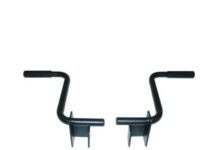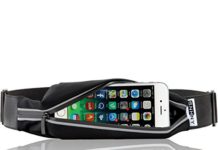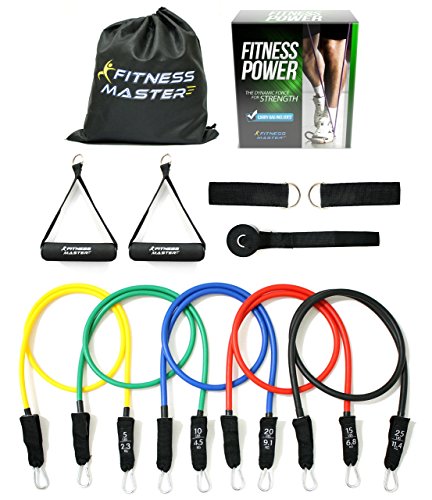
My last few weeks of peak training! As you can tell, I like to keep things high-tech.
IM Louisville is now officially less than a week away away, and predictably I am mired in yet another crappy taper. I’m trying to force myself to relax, which has been about as effective as telling someone not to think of an elephant, so in lieu of actually relaxing, I decided to do something novel: I’m updating my blog.
I’ve been thinking for a while about writing about the specifics of my race-day plan – everything from gear to nutrition/hydration to strategies. I know you can find this information all over the interwebs, but I have to be honest with you – a lot of what I was reading was maddeningly vague. I like to think of myself as smart enough to think in abstractions, but I’m not. I need the comfort of unmistakable specifics.
Take bike nutrition. I was floundering when the extent of my instruction was “take in 250-300 calories per hour on the bike” but when others laid out exactly what that looks like for them, I finally got it. So I decided – both for the benefit of any readers who might find this, as well as my own – to share the specific details of what I plan to do on race day.
Before I continue, a disclaimer: what works for me may not work for you (and hell, as I haven’t even raced yet, it may not work for me). Also, not a sports nutritionist, coach, dietitian, expert, etc. etc. etc. I’m just a lady with a dream trying to figure this shit out.
OK, let’s begin.
RACE GEAR
I’ve been testing out my gear all summer and fall long, including through one soul-crusher of a workout that lasted seven hot, steamy hours, and I feel pretty confident that my choices will hold up.
Swim: $17 sports bra from Target, which is literally the only sports bra I own that doesn’t chafe the shit out of me; Coeur Sports team tri shorts; Orca sleeveless wetsuit; Roka R1 goggles in amber mirror.
(If it ends up being hot – which I doubt it will, but then again, look at the twin infernos of last week’s IM Chattanooga and Augusta 70.3 – I will swap out the wetsuit for my Roka Viper Comp swimskin, which I am obsessed with and love dearly.)
Bike: Coeur Sports aero top; same tri shorts; bike gloves; non-aero helmet; Smith Optics sunglasses with polarized lenses. I will likely wear arm warmers because it’s probably going to be in the high 60s and low 70s that day. (WHAT.)
I’m still riding the Felt S2, still running my HED race wheels. I’ll probably upgrade my bike at some point, but for right now, me and my Felt are BFFs. Besides I’m still enjoying the thrill of riding my entry-level bike I bought from a dude on Craigslist as I blow past guys on Cervelo P5s. 
Run: Same top and shorts; Hoka One One Conquests; Balega socks; Boston Marathon visor.
NUTRITION AND HYDRATION
After a bunch of test runs I think I have this figured out. Of course, I say that now, but I’m also fully aware that this could be a repeat of Keys 50, where about three-quarters of the way into the race, everything will start tasting like burned dirt and I will turn into a fussy baby who won’t let another spoonful of mashed peaches past her pursed lips. But hey, dare to dream, right?
During my training rides, I made an effort to eat as much solid food as I could during the first half of the bike ride because by the time the sun was high in the air, I could usually no longer stomach anything that wasn’t liquid.
Of course, this leaves me with a giant question mark. How much of my inability to eat late in the bike rides was due to physical exertion, and how much was due to the fact that it was fucking hot as the damn sun outside? This is a question that shall remain unanswered until race day.
At any rate, my goal is to take in enough calories on the bike – about 250 an hour – so that when it’s time for me to start my run, I have a nice comfortable little energy buffer in my system.
Pre-race: Hard-boiled egg, bagel with peanut butter, coffee with creamer. While standing in line, I’ll eat an energy bar – probably a Clif bar – and drink a bottle of Infinit mixed with Base Amino Acids and Endurance Salts. Forty-five minutes before the start, I’ll drink a Red Bull, and then right before going into the water I’ll eat a GU.
Swim: Five gallons of the Ohio River, probably.
T1: Water and another GU.
Bike: I have four forms of nutrition:my Infinit liquid mix, GUs, chocolate Boosts and snack baggies full of peanut butter pretzels and cut-up Clif bar.
- Infinit: my XLAB Torpedo will be full of this, and I will also have two super-concentrated bottles that I will mix with water picked up from the aid stations. I’ll sip this regularly throughout the bike.
- PB pretzels and Clif Bar: the baggies will go in my bento box, and every time my Garmin marks off a 5-mile split, I’ll either eat a block of Clif Bar or a couple of pretzels.
- GUs: One every 45 minutes.
- Boost: One every hour.
I’m only starting with half my nutrition tucked in my jersey pockets, because the other half will be at the midway point in my Special Needs bag, along with a bottle of flat full-sugar Coke and a PB&J Uncrustable. Yum.
T2: Water and I guess I’ll try to choke down yet another GU.
Run: Water at every aid station. Coke at every other aid station. GUs every 45 minutes.
I’m also going to carry a tube of Base Endurance Salts with me just in case. I’ve only ever needed them when it’s hot outside – because I am a crazy-heavy sweater – but I’d rather be safe than sorry.
I still remember going slightly hyponatremic at Hutchinson Island Half-Ironman last year, when it was in the 90s with no shade and I’d had nothing but tons of water for the first six miles of the run. I was totally out of it and crying incoherently, but then I took a salt tablet from another racer and within minutes I felt fine. LESSON LEARNED.
Ever since then, when it gets hot outside, I either take Endurolytes, or, thanks to Coeur’s relationship with Base, the endurance salts. That was just a flat-out miserable experience and I would like very much to never experience it again.
RACE STRATEGY
Swim: Taking it suuuuper easy. I don’t want to come out of the water already feeling exhausted. That would really suck.
I’d like to be out of the water in under 1:10, but I really have no idea what’s going to happen. I will tell you that I swam 2.4 miles in May in the ocean without a wetsuit, and I did it in 1:14. I figure that downriver + wetsuit + five months of training could easily = cutting several minutes off that time. But, like I said, we’ll see.
Bike: For the first eighty miles, I’m going to chill out. Small chainring FTW. I’m sure there are going to be people – OK, let’s be real: bros, they are going to be aero-bros – gunning hard on the bike from the beginning and so it’s going to take some mental discipline for me to not get carried away with that nonsense.
The last thirty miles are basically all downhill so if I see an opportunity to pick it up a bit, I will, but I’m not going to go crazy. I have no desire to follow the traditional IM path of Swim, Overbike, Walk.
I have no idea what my target pace will be because, again, I trained in temps that are about 30 degrees hotter than what’s forecast for race day. A pace that made me cry and dry-heave this summer could very well feel amazing during the race.
(I really wish I had power on my bike so I could have a more objective measure of my effort instead of just “ugh, this feels hard.”)
Predicted time? ¯\_(ツ)_/¯ I was hoping for six hours but now I’m thinking more like 6:15-6:30. But again, who knows!
P.S. I am not going to pee on the bike.
Run: So I’m totally doing a run-walk for my IM marathon. For the first 30 minutes, I’m going to run five minutes and walk a minute, and then after that I’m going to switch to running five minutes and walking thirty seconds. I did this for all of my long runs and I was able to maintain average paces in the 8:50-9:10 area (and again, this was while it was stupid hot outside).
My experiences with ultrarunning give me a bit of an edge because I know how to keep some tiny part of my mind focused on the goal ahead even as the rest of my brain whines and begs to be allowed to lay down in the middle of the road and go to sleep.
If I eat enough on the bike and don’t go too hard and basically manage my shit like someone who actually has a clue as to what she’s doing, I think it’s possible I could do the marathon in 4:08. I don’t know why I think that but that’s the number that comes up with all of my visualizations, so 4:08 it is.
I’ve improved a lot with the swim and the bike over the past couple of years, but let’s be real – I’m merely a decent swimmer and I’m only average on the bike. My real strength is running long distances, and that’s what I built my race-day strategy around.
—
So that’s what I’ve figured out so far. I haven’t quite sorted out what goes in what bag yet, but I’m working on that. There’s a lot to do to get ready for something like this! It’s a little overwhelming, and in a way it makes me miss the simplicity of the actual training, where I’d just get up in the morning and know that today I had to swim 3500 yards and run for an hour, or that I was scheduled for a five-hour bike ride with a 15-minute run.
But it’s also kind of fun too, especially after having spent the past couple of years watching Brian and other friends do all the preps for their various IM races. It’s cool to finally get to be part of it!





